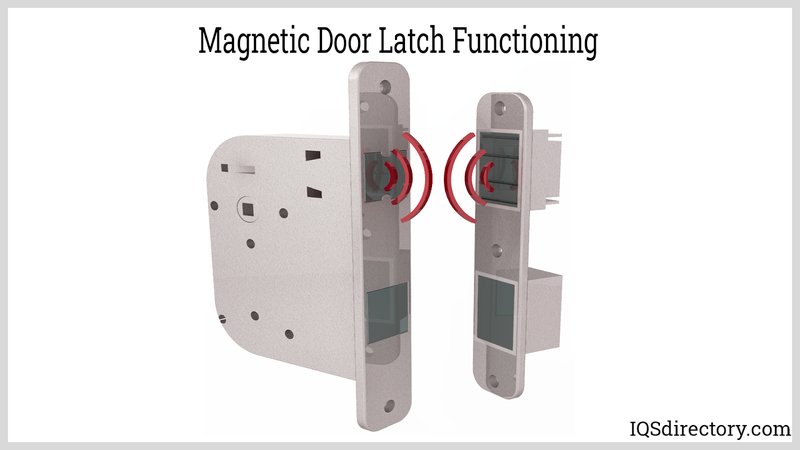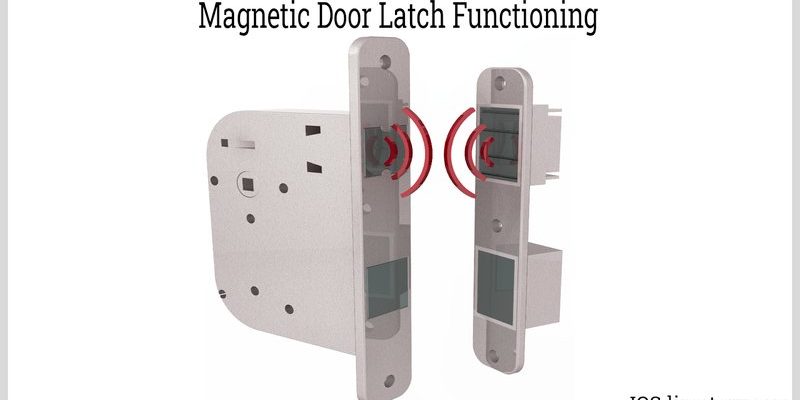
But like any device, these latches can sometimes run into problems. Maybe your door isn’t closing properly, or it’s sticking when you try to open it. If you’ve ever been left scratching your head over why your magnetic latch isn’t working as it should, you’re in the right place. Let’s dive into some common issues with magnetic latches and how to troubleshoot them effectively.
Understanding Magnetic Latches: How They Work
To troubleshoot any problem, it helps to know how the device functions. Magnetic latches typically consist of two main parts: a magnet embedded in the door and a metal plate or strike mounted on the door frame. When the door closes, the magnet pulls the plate closed, securing the door in place.
Here’s a cool analogy: think of a magnetic latch as a couple of best friends who can’t bear to be apart. When the door swings shut, the magnet and the metal plate become inseparable, creating that satisfying click. However, if something interferes with that connection, problems can occur.
If you’ve got a malfunctioning magnetic latch, you might notice your door won’t stay closed or isn’t latching properly. Understanding this basic mechanism helps you pinpoint the issue better as we dive deeper into specific problems.
Common Issues with Magnetic Latches
When it comes to magnetic latches, certain issues are more common than others. Often, these problems can be traced back to alignment, wear and tear, or even environmental factors. Here’s a closer look:
- Misalignment: If the door isn’t aligned properly with the frame, the magnet may not connect with the strike plate.
- Wear and Tear: Over time, the magnet or strike plate can become weak or damaged, hindering their ability to latch securely.
- Environmental Factors: Changes in temperature and humidity can cause door frames to swell or shrink, affecting the latch’s operation.
Each of these issues might seem small, but they can lead to annoying door malfunctions. Let’s look at how to troubleshoot these common pain points one by one.
Troubleshooting Misalignment Issues
Misalignment is often the root cause of your magnetic latch problems. If your door sticks or won’t close, the first step is to check the alignment between the magnet and the strike plate.
Here’s how to tackle it:
1. Visual Inspection: Close the door slowly and observe where the magnet meets the strike plate. Is it hitting above, below, or to one side?
2. Adjust the Strike Plate: If it’s misaligned, you might be able to shift the strike plate slightly by loosening the screws and repositioning it. Make sure it lines up with the magnet.
3. Test the Door: After making adjustments, close the door again to see if the latch catches properly.
Sometimes, a simple adjustment can do wonders and restore the ease of use.
Addressing Wear and Tear
Over time, parts can become worn out, which is another common issue with magnetic latches. A weak magnet or a damaged strike plate can lead to failure in latching.
Here’s what you can do:
1. Check for Wear: Inspect the magnet and strike plate for any visible damage. Look for cracks, chips, or a decrease in magnetic strength.
2. Replace Parts: If you notice wear, it may be time to replace either the magnet or the strike plate. Most manufacturers sell replacement parts specifically designed for their magnetic latches.
3. Reinstall New Parts: Follow the manufacturer’s instructions for installation. This typically involves removing the old part and securing the new one in place.
Make sure to do this carefully, as a solid replacement can restore your door’s functionality.
Dealing with Environmental Factors
Believe it or not, the environment can affect how well your magnetic latch works. Temperature changes and humidity can cause wood to expand or contract, which might misalign components or make them stick.
To manage these issues:
1. Monitor Changes: Pay attention to how your door behaves with changes in weather. Does it stick more in humid conditions?
2. Adjust for Swelling: If you notice swelling, you may need to sand down the edges of the door or the frame slightly. Be careful and take your time here; you want a snug fit, not a loose one!
3. Seal and Protect: Consider sealing your door to prevent moisture absorption, which can prolong its life and maintain alignment.
Understanding how weather affects your door can save you headaches down the road.
When to Call in a Professional
While many minor issues can be solved through simple troubleshooting, there are times when it might be best to call in a professional. Here are some signs:
1. Persistent Problems: If you’ve adjusted the alignment and replaced parts yet still have issues, it may indicate a more extensive problem.
2. Structural Issues: If the door frame appears warped or the door itself is damaged, it might be indicative of structural damage that requires expert attention.
3. Complex Repairs: If you’re uncomfortable with DIY repairs or lack the tools, a professional can ensure the job is done correctly.
It’s okay to seek help when needed; sometimes, a fresh set of expert eyes can solve persistent issues quicker than you think.
Final Thoughts on Troubleshooting Magnetic Latches
Magnetic latches can simplify your life with their ease of use and modern appeal. However, like any hardware, they can run into issues. Understanding how they work and being able to troubleshoot common problems can save you time, frustration, and money.
Whether you’re dealing with misalignment, wear and tear, or environmental factors, a bit of knowledge goes a long way. Remember to stay patient and methodical as you work through the troubleshooting steps. With the right approach, you can keep your magnetic latches functioning smoothly and enjoy the quiet satisfaction of a properly latching door.
